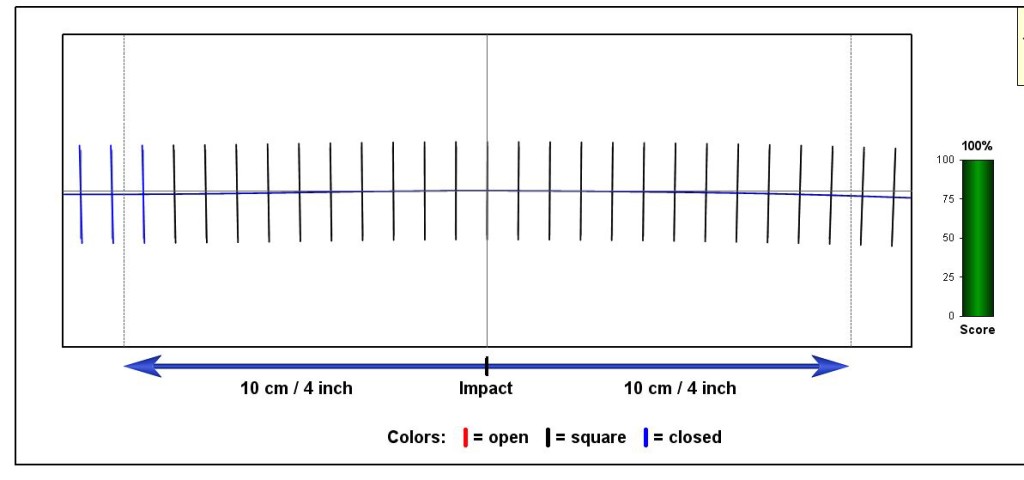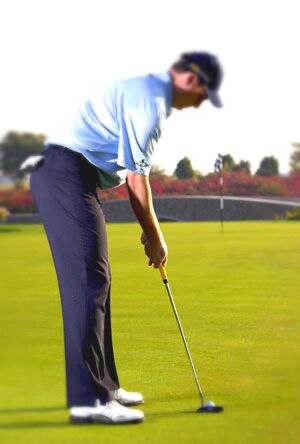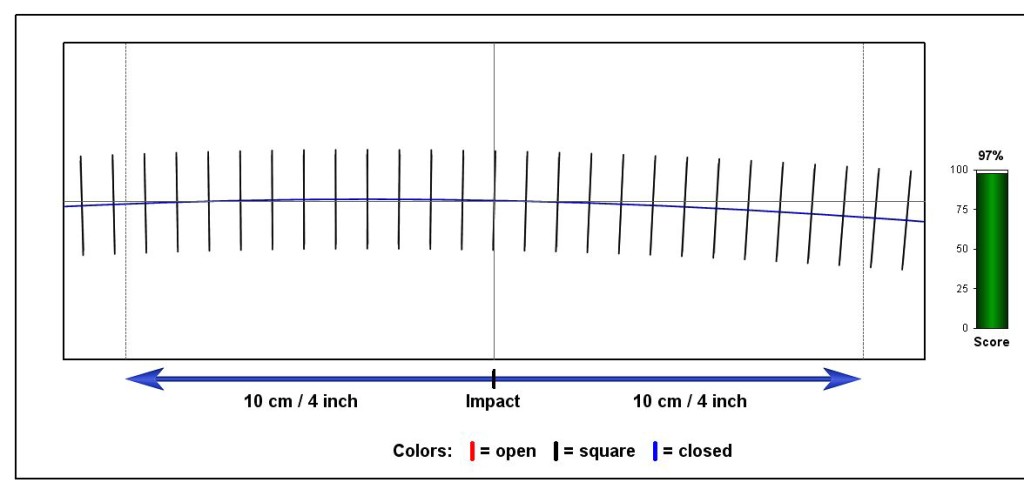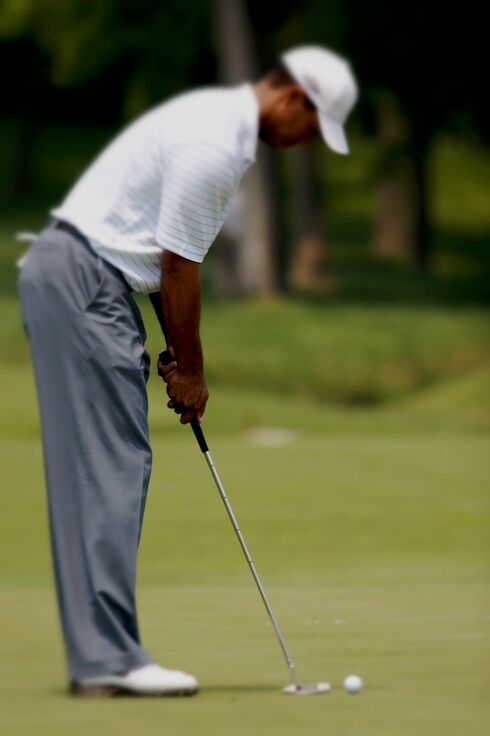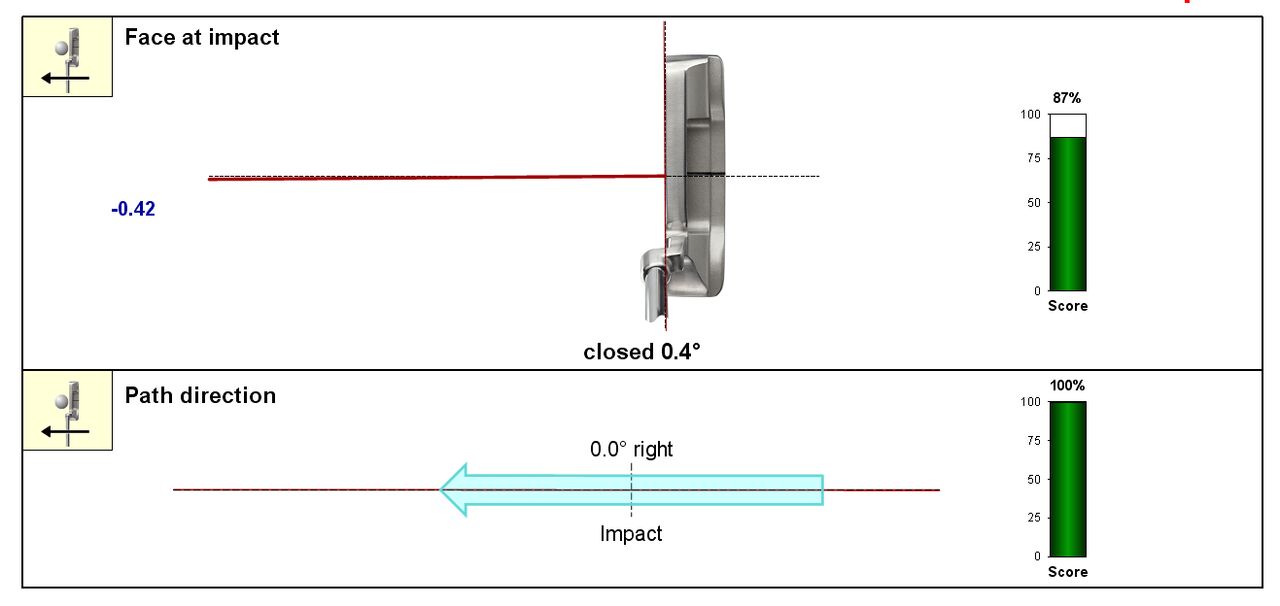Different strokes for different folks
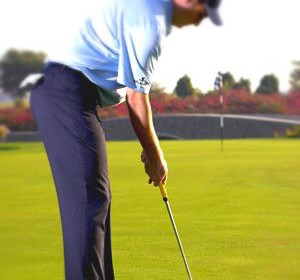
A lot goes into the mechanics of a putting stroke, however for all the different styles of putting in reality the most important things in terms of consistently holing putts is starting direction, speed and repeatability. Understanding the different types of strokes is an important aspect of creating a putting stroke that works for you and helps to create a consistently good starting direction.
The two most common descriptions for the different types of stroke we use are “straight back straight through stroke” and an “arcing stroke”. While everybody will have a slightly different stroke there are certain things that may work better for you with each model.
Straight Back Straight Through
The Straight back and straight through putting stroke is generally considered to be a stroke that will work in a perfectly straight line relevant to the ball to target line. During this stroke the putter face will also remain square (or perpendicular) to the ball to target line throughout the stroke. While many tour players have been biomechanically measured over the years it is worth noting that a perfectly straight back straight through stroke is rare and there is almost always some sort of arc, however in this context I would consider this type of stroke to be one that has minimal curve on the arc and minimal rotation of the club face. As you can see the below data from our SAM Puttlab represents the players club face relevant to the ball to target line. You will notice there is very little curvature in the stroke and the club-face remains relatively square throughout the stroke.
Testing has shown that changing one’s address position can greatly alter the putting stroke. In this case we would generally need to see:
- The player will need to bend over the golf ball more than usual. The more a player bends over at the waist, the flatter the arc is liable to become and the less the putter head will rotate throughout the stroke.
- The players putter should be shorter and more upright than standard. The more upright the lie angle is the easier it becomes for the putter to sit in the lifeline of the hand. By doing this it becomes quite easy to reduce the curvature of the arc.
- The hands should sit directly below the shoulders. Combining this with a more bent over posture will make it significantly easier to create a pendulum effect with the arms and shoulders.
As you will see above David Howell would demonstrate similar characteristics to a straight back straight through set up. You will notice he is significantly bent over, the putter is quite small and as a result sits quite upright and his hands sit directly below his shoulder. Although David may not have a perfectly straight back and through stroke he will have minimal rotation as a result of this set up.
The Arcing Stroke
The arcing stroke generally matches the movement of the putter to the natural rotation of the body. Almost every stroke has some arc to it however some more than others. The more arc there is to the stroke the more face rotation you will tend to see in the stroke. If there is too much arc in the stroke it can often be difficult to produce a square clubface consistently at impact. The natural shoulder movement combined with the angle of the club shaft will create an arc for the putter to move on, ideally the putter face will always move at 90 degrees to this arc. This type of stroke would generally be considered more natural to a straight back straight through style. With the arcing stroke the clubface can stay at 90 degrees to the arcs direction at all times without any physical manipulation whereas with a perfectly straight back straight through stroke requires some hand or forearm manipulation to hold the clubface square to the target.
When it comes to producing an arced stroke the requirements are almost the complete opposite to the aforementioned straight back straight through stroke:
- Players will generally set up relatively tall, particularly when compared to a straight back straight through style putter
- The standard putter length tends to be better suited to this style as opposed to a shorter length which would suit a straight back straight through player
Tiger Woods has been a great example of this type of stroke. As you will see above Tiger looks tall and relaxed, while the putter also sits on a significantly flatter angle when compared to David’s.
Conclusion
In my opinion everyone will discover there own answers to the question of “which type of stroke is best”, and answers on this question will vary on the subject. However I do like elements of both and for the most part you should be able to combine these elements to create a rather successful putting stroke. First of all there definitely does need to be some sort of arc to the stroke, however how much will rely on the players. I feel that for those who are naturally comfortable with the flat stick, allowing the face to open and close with a more arcing style is fine, as long as there is not excessive rotation. I feel if a naturally confident putter gets too tied down to achieving a straight back and through putting stroke they may loose a lot of their touch and feel on the greens. Meanwhile for the less confident putter I think taking as much rotation as possible out of the stroke would not be a bad thing. Doing this will minimize the chances of hitting the ball of the intended line and should make them feel more in control of the putt.
No Matter what style you choose, the can both work as you will see from the below images, my suggestion is try them both and figure out what works for you.
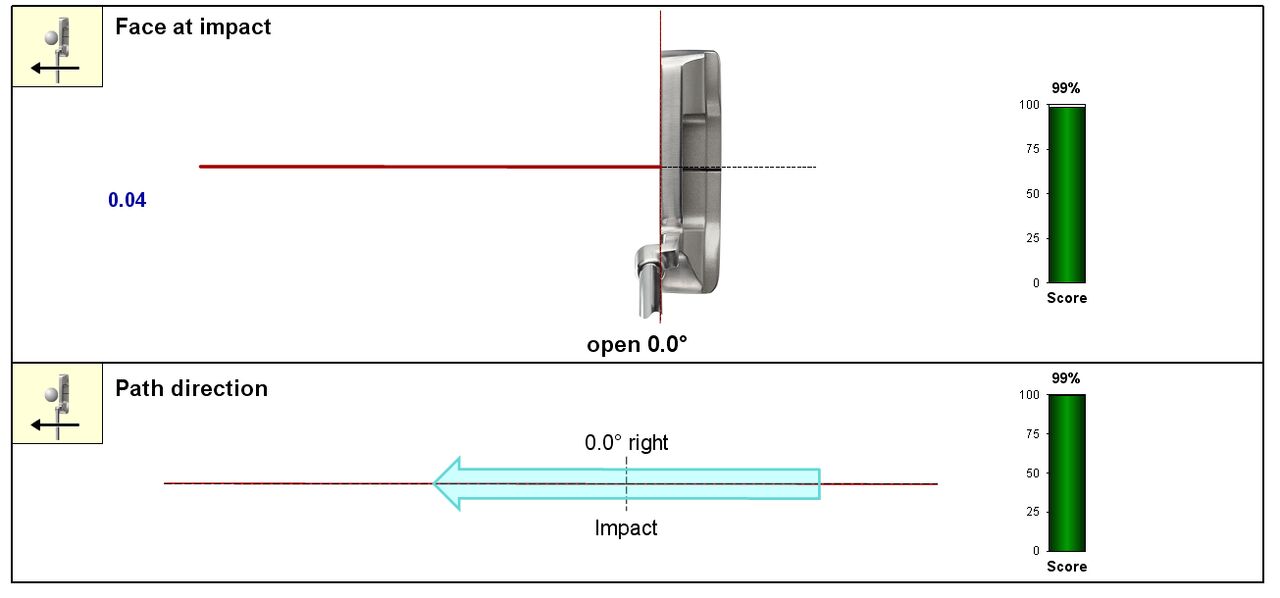 Straight Back Straight Through Face and Path at Impact
Straight Back Straight Through Face and Path at Impact
